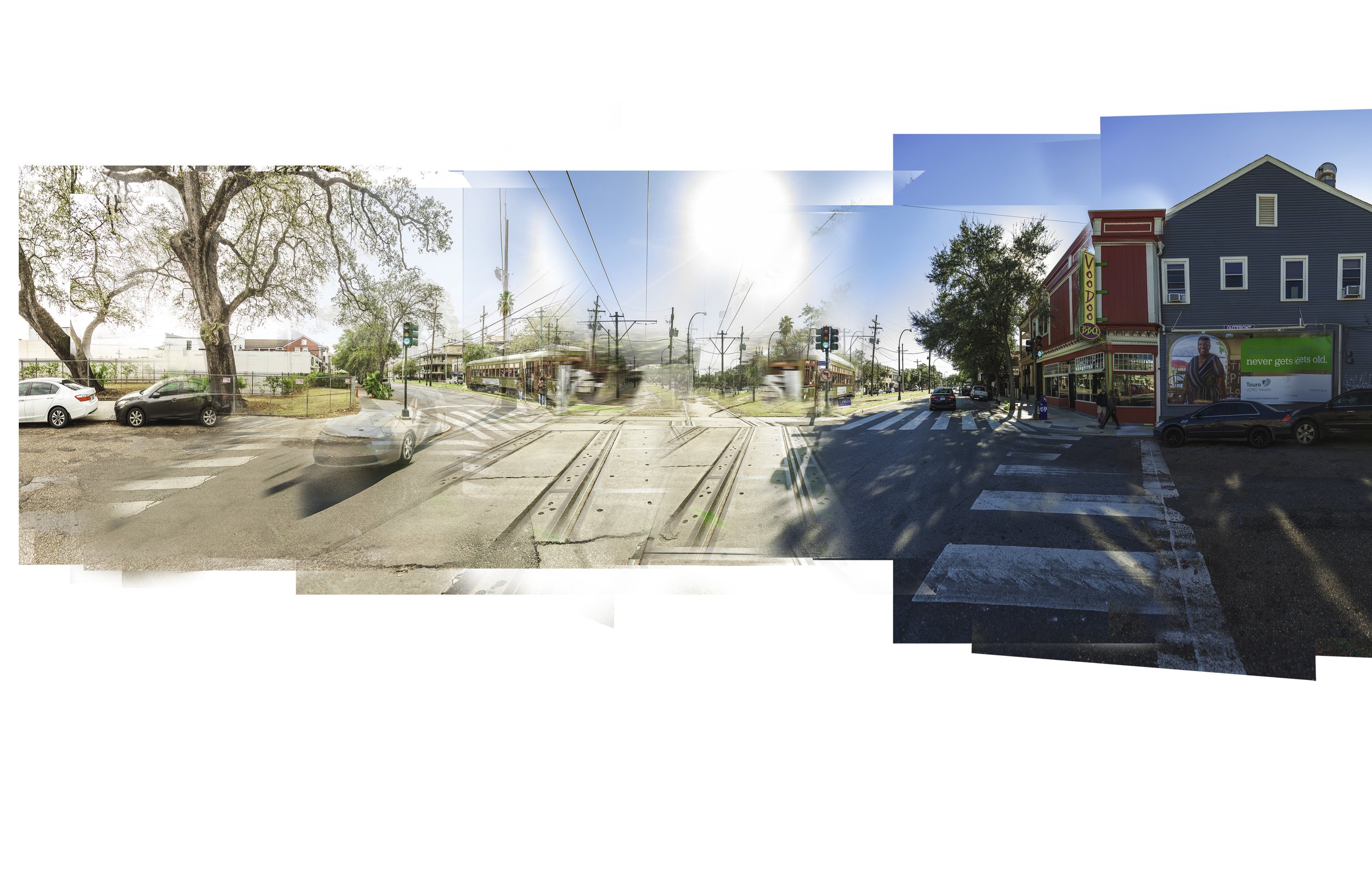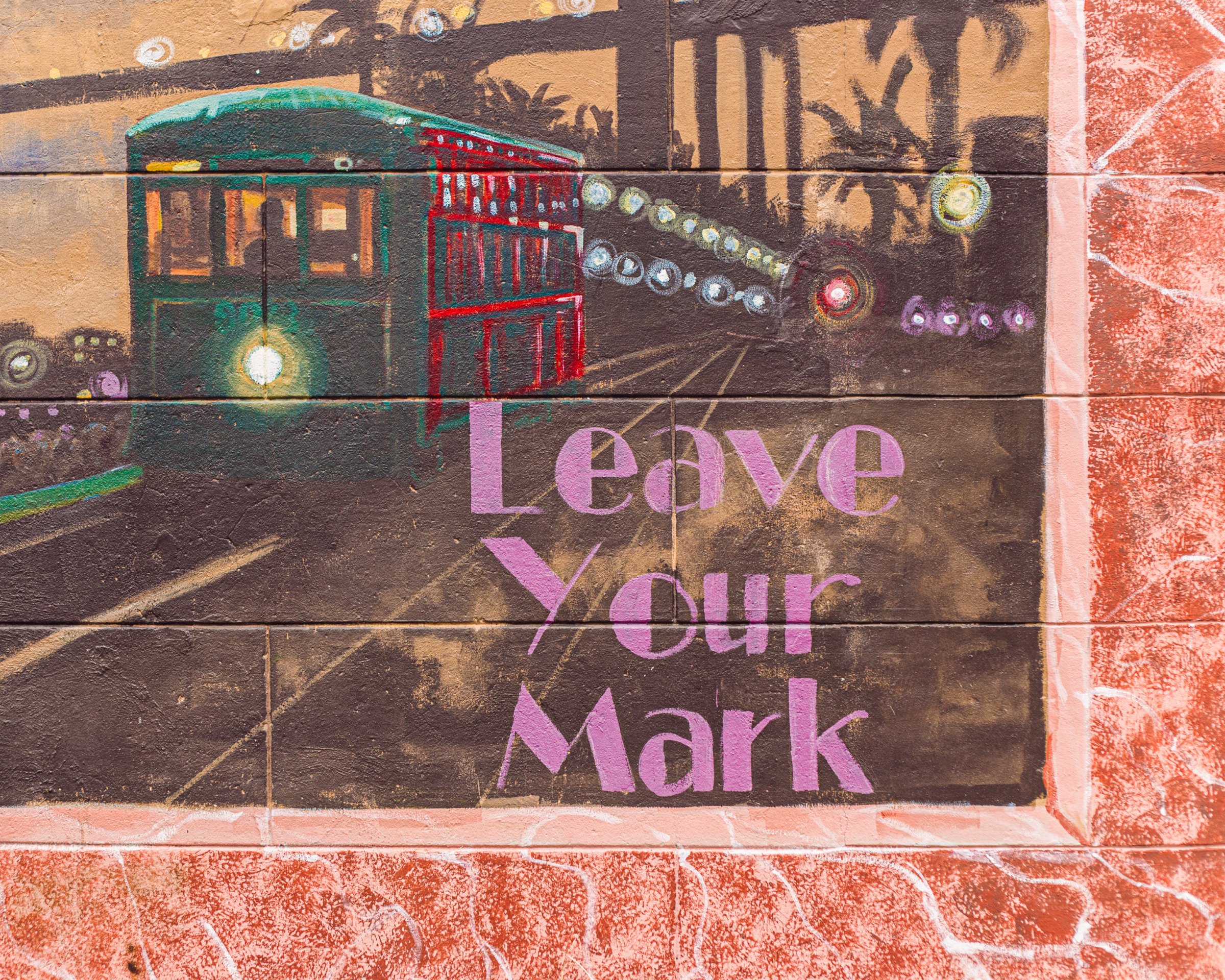
the atmosp(here) of space
a visual census and living archive of the people, places, and legacies that shape what we now know as Central City
See You Next Sunday (S.U.N.S.) | 2021
wood, mirrors, inkjet prints, 55” w x 78” h /ea.
This piece celebrates and pays homage to the holy trinity of Sunday activities we can witness across New Orleans — Second lines, Super Sunday, & worship — and how they speak to and inform one another. Walking around Central City specifically, it’s impossible to not feel the spiritual and cultural legacies of these traditions grounding the human spirit. They are the roots and threads that grew and sustain an atmosphere of community in the neighborhood.
Central City now sits at a pivotal moment in its history — those roots and threads have been feeling the ripple effects of what Nic Brierre Aziz, a Haitian-New Orleanian interdisciplinary artist and curator, has termed “White barbarist” policies and actions. For example, The long-term impacts of the redlining that took place in the 1930s, suppressing neighborhood property values, is now an asset to gentrification — with the White population of the neighborhood doubling in the last ten years as housing prices in nearby neighborhoods have skyrocketed. Through this “growth,” the demolition of neighborhood public housing, displacement, and an economy that doesn’t sustainably support neighborhood cultural traditions, the strong sense of community that once existed has frayed — raising questions about what we sacrifice in the pursuit of altering our built environments.
The mirrors in the piece serve as moments of reflection and encourage viewers to consider how they see themselves within the changing landscapes of New Orleans and consider what roles they can or do play in the preservation of culture and social infrastructure.
Write On MLK | 2020-2021
60’ panoramic photo, fabric, viewer responses, steel cable, conduit
This mixed-media installation features a panoramic photo spanning two miles of Martin Luther King Jr. Blvd — from Broad Avenue to Tchoupitoulas Street. The different colored fabrics along the perimeter call attention to the history of redlining practices that have had devastating effects on Black communities across the United States. The piece was inspired by the question “what might this neighborhood look like today if the people that were sent out by the Home Owners Loan Corporation to create “residential security” maps were rooted in this community?” and pushes viewers to consider the ripple effects of these surveys and how their impacts are still felt today. It’s not a coincidence that a majority of neighborhoods facing rapid gentrification now were redlined in the 30s and 40s.
Visitors are invited to share a memory, experience, thought that correlates with a specific sense along the corridor and hang it near the corresponding location. Through this community collection of lived experiences, Jose aims to create conversations about what we choose to value, challenge ideas of context and boundaries, and create a tapestry of lived experiences that blends the past, present, and future.
Over the course of the installation, additional images of the neighborhood by the legendary Polo Silk were included as well as a more detailed history of Central City’s housing projects by Civic Studio.
above: Tchoupitoulas Street, St Charles Avenue, Broad Street. One of the unexpected outcomes from this panoramic image was how visible the “bowl shape” of New Orleans’ landscape was — there is a roughly 18” difference in elevation between the two ends.
100 Years of Worship
Macedonia Baptist Church’s 100 Year Anniversary in August 2021. One of the oldest religious organizations still active in the neighborhood, the church is known for its rich musical history and traditions.
It Was Written
Images of marks left behind by residents, graffiti writers, muralists, and more.









